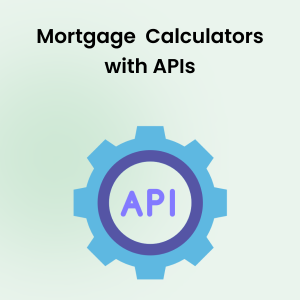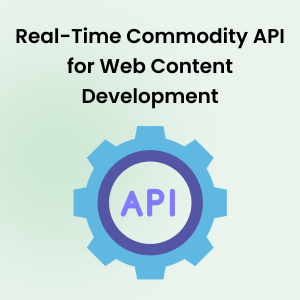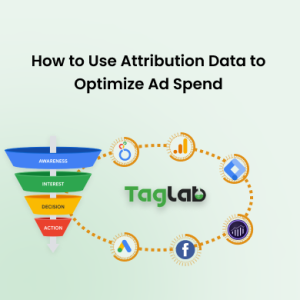Your cart is currently empty!
Marketing Cost Savings Metric Definition
Posted by:
|
On:
|
Marketing Cost Savings refers to the reduction in marketing expenses while maintaining or improving performance, such as generating leads, increasing conversions, or driving revenue. This metric helps businesses optimize their marketing spend by identifying areas where costs can be reduced without sacrificing effectiveness, leading to more efficient and budget-conscious marketing strategies.
Detailed Explanation
What is Marketing Cost Savings?
Marketing Cost Savings is a key performance indicator that tracks how well a business reduces its marketing costs while maintaining or improving overall results. By optimizing processes, renegotiating vendor contracts, using automation tools, or eliminating inefficient channels, businesses can achieve significant cost savings without negatively impacting the performance of their marketing efforts. This metric is essential for maximizing the return on investment (ROI) and ensuring the sustainability of marketing strategies, especially in cost-sensitive environments.
How it Works?
Marketing Cost Savings is calculated by measuring the difference between the original marketing budget and the actual spend after implementing cost-saving strategies, without negatively impacting performance:
Cost Savings = (Original Marketing Budget – Actual Marketing Spend) / Original Marketing Budget x 100
Businesses can use this metric to assess the effectiveness of cost-saving initiatives, helping them identify opportunities to further reduce expenses while ensuring that their marketing campaigns remain effective.
Types of Marketing Cost Savings Strategies
- Automation and Efficiency Tools: Using marketing automation platforms to streamline processes and reduce manual work can lead to significant cost savings.
- Vendor Negotiation: Renegotiating contracts with vendors or switching to more cost-effective solutions helps cut unnecessary costs.
- Channel Optimization: Shifting budget from underperforming channels to high-performing ones reduces waste and maximizes the impact of marketing spend.
- In-House Campaign Management: Managing certain marketing activities in-house rather than outsourcing them can reduce costs, especially in areas like content creation or social media management.
Illustrative Scenarios
Examples
- An e-commerce company saves $20,000 annually by automating email marketing workflows, reducing manual labor and improving efficiency.
- A retail business renegotiates its digital advertising contract with a vendor, reducing its ad spend by 15% while maintaining the same performance in lead generation and conversion rates.
Segmentation
Marketing Cost Savings can be segmented by campaign, channel, or department to provide insights into which areas of the marketing operation offer the most potential for cost reduction. For example, businesses can evaluate whether specific advertising channels or processes yield significant savings compared to others.
Factors Influencing Marketing Cost Savings
- Automation Tools: The use of marketing automation platforms can streamline workflows and reduce labor costs, leading to greater cost savings.
- Vendor Contracts: Renegotiating contracts with vendors, suppliers, or platforms can significantly impact marketing cost savings by reducing recurring expenses.
- Efficiency of Channels: Eliminating underperforming marketing channels and reallocating budget to more efficient ones can lead to substantial savings.
- Internal Resources: Leveraging in-house talent for certain marketing tasks rather than relying on agencies or external providers can result in cost reductions.
- Market Conditions: Economic factors and competitive pricing can influence marketing costs, with businesses needing to adjust their strategies to maintain cost savings.
Strategies to Improve Marketing Cost Savings
- Implement Automation: Use automation tools to streamline marketing tasks, reduce manual work, and cut costs associated with labor-intensive processes.
- Renegotiate Vendor Contracts: Regularly review and renegotiate contracts with vendors, agencies, or media buyers to ensure that you are getting the best rates for your marketing efforts.
- Focus on High-Performing Channels: Reallocate budget from underperforming channels to those that consistently deliver strong results, reducing wasted spend and increasing efficiency.
- In-House Campaign Management: Bring key marketing functions in-house to avoid the higher costs of outsourcing, while ensuring that internal teams are fully trained and capable of managing these functions.
- Eliminate Inefficient Tactics: Conduct a performance audit of current marketing tactics and eliminate those that do not contribute to meaningful results, reducing unnecessary costs.
Benchmark Indicators
Understanding Marketing Cost Savings benchmarks by industry helps businesses evaluate their cost-saving efforts and set realistic goals for budget optimization:
- Technology Industry: Cost savings typically range from 10% to 20% by automating marketing tasks and optimizing vendor contracts.
- Healthcare Industry: Cost savings benchmarks often range from 8% to 15%, achieved by improving efficiency in direct mail campaigns and renegotiating vendor contracts.
- Financial Services: Cost savings generally range from 12% to 18%, with a focus on eliminating underperforming marketing channels and using data-driven optimizations.
- E-commerce: Cost savings can range from 15% to 25%, driven by automation tools, optimized ad spend, and efficient inventory and fulfillment strategies.
- Education Sector: Cost savings typically range from 10% to 18%, influenced by automation in marketing communications and renegotiation of advertising budgets.
- Real Estate: Cost savings benchmarks often range between 12% and 20%, with savings achieved through automation, streamlined processes, and vendor negotiations.
Tools for Measuring Marketing Cost Savings
- Cost Optimization Platforms: Tools like Coupa, Planful, and Spendesk help businesses track and manage costs across marketing departments, identifying opportunities for savings.
- Marketing Automation Tools: Platforms like HubSpot, Marketo, and Salesforce Pardot provide automation that reduces manual work and delivers cost savings in marketing workflows.
- Analytics Platforms: Data analytics tools like Google Analytics and Adobe Analytics help businesses track campaign performance, providing insights into which areas can be optimized for cost savings.
Common Pitfalls and Mistakes
- Cutting Costs Without Considering Performance: Reducing marketing expenses without ensuring that performance remains stable can lead to lower overall results, offsetting the benefit of cost savings.
- Overreliance on Automation: While automation can lead to cost savings, relying too heavily on it without proper oversight may lead to decreased campaign effectiveness or missed opportunities.
- Failure to Reassess Vendor Contracts: Sticking with outdated vendor contracts or failing to renegotiate terms can result in missed opportunities for cost savings.
- Neglecting Low-Cost High-Impact Channels: Focusing only on high-cost channels may result in missed savings opportunities from lower-cost but highly effective channels like email marketing or organic social media.
- Inaccurate Cost Tracking: Failing to accurately track and report marketing costs can lead to poor decision-making, with businesses missing out on potential cost-saving opportunities.
Frequently Asked Questions
What is Marketing Cost Savings?
Marketing Cost Savings refers to the reduction in marketing expenses while maintaining or improving performance, leading to more efficient and cost-effective marketing strategies.
Why is Marketing Cost Savings important?
Marketing Cost Savings is important because it helps businesses reduce their marketing spend while maintaining or even improving the results of their campaigns, leading to better budget management and improved return on investment.
How can I improve Marketing Cost Savings?
To improve Marketing Cost Savings, businesses should implement automation tools, renegotiate vendor contracts, optimize high-performing channels, manage campaigns in-house, and eliminate inefficient tactics.
What factors influence Marketing Cost Savings?
Factors influencing Marketing Cost Savings include automation tools, vendor contracts, efficiency of channels, internal resources, and market conditions.
What are good benchmarks for Marketing Cost Savings?
Good benchmarks for Marketing Cost Savings vary by industry, with savings above 18% considered excellent, while savings below 8% indicate a need for improvement.



